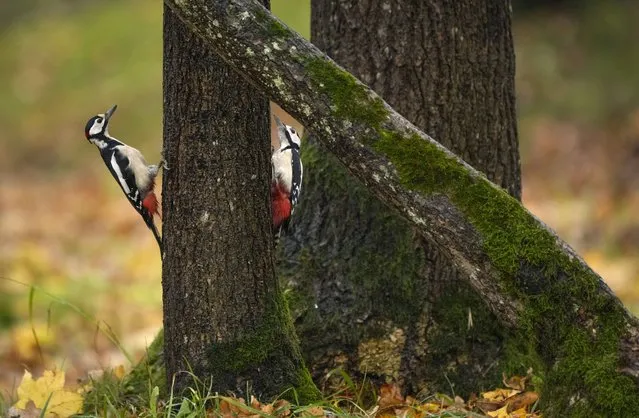
Woodpeckers hold on to a tree trunk on an autumn day in Tallinn, Estonia, Tuesday, October 18, 2022. (Photo by Sergei Grits/AP Photo)
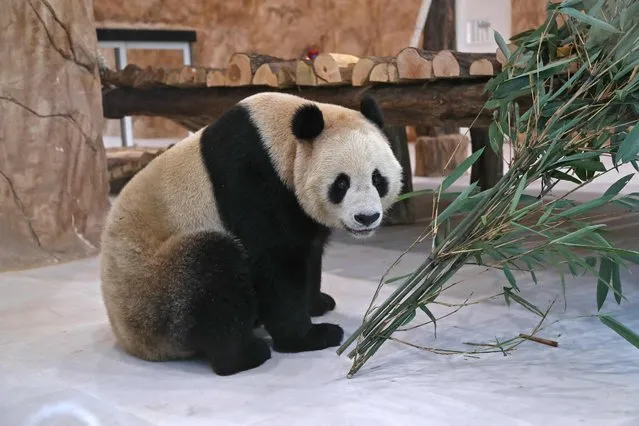
A Chinese giant panda is pictured in an enclosure at the Panda Park in Al Khor on October 19, 2022. Qatar became the first Middle Eastern country Wednesday to receive Chinese giant pandas – Suhail and Soraya – who, in true Gulf fashion, took up residence in luxury air-conditioned quarters. The Chinese government sent the animals as gift to mark the World Cup that starts November 20. China has not qualified for the event, but is a major customer for Qatar's natural gas. (Photo by Denour/AFP Photo)
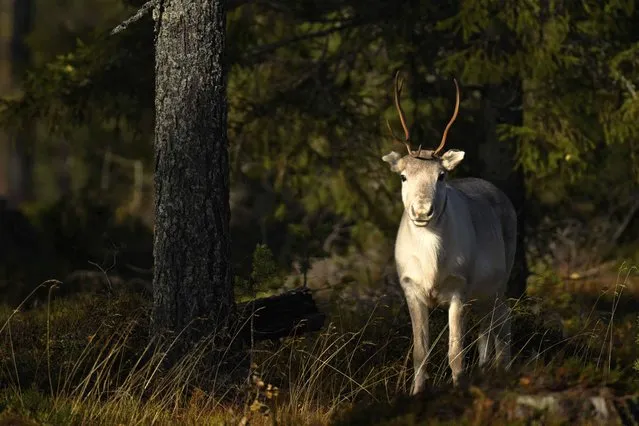
A reindeeer stands in a forest near Vikajarvi, Finland on October 7, 2022. (Photo by Olivier Morin/AFP Photo)
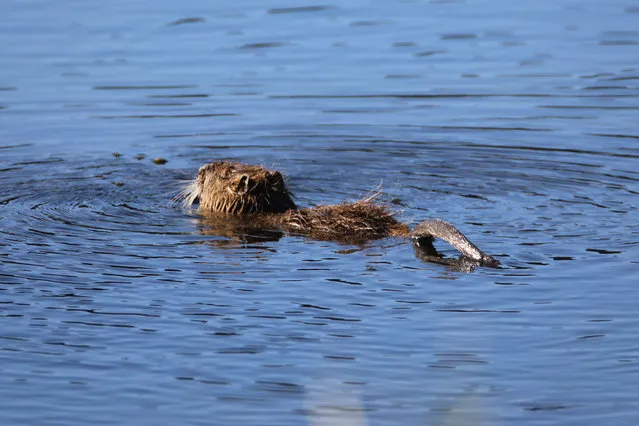
A nutria, also known as coypus or swamp rats, swims in the water near Karasu Reed Field in Igdir, Turkiye on October 08, 2022. Nutrias, originally native to subtropical and temperate South America, live at the foot of Mount Ararat (Mount Agri). (Photo by Huseyin Yildiz/Anadolu Agency via Getty Images)
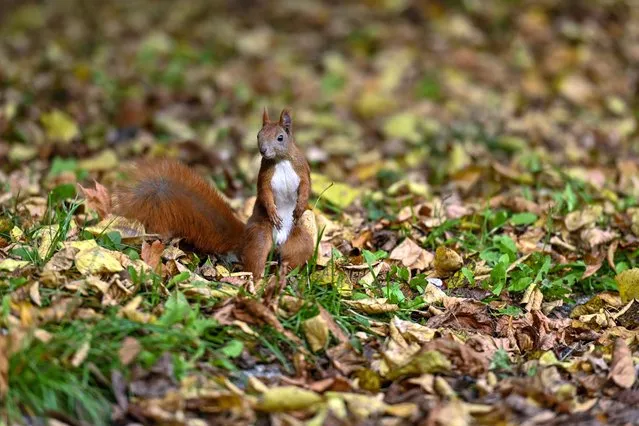
A red squirrel is looking for food in the park surrounding the Soviet Military Cemetery in Warsaw. On Saturday, On Saturday, October 08, 2022, in Warsaw, Poland. (Photo by Artur Widak/NurPhoto via Getty Images)
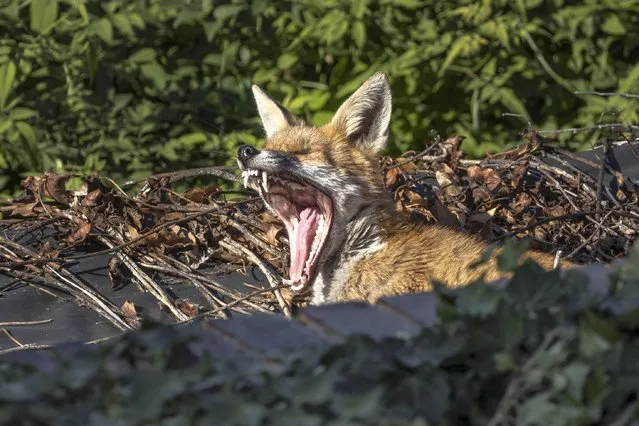
Scavenging in the city proves tiring work for this fox in south London. United Kingdom on October 12, 2022. (Photo by Jack Hill/The Times)
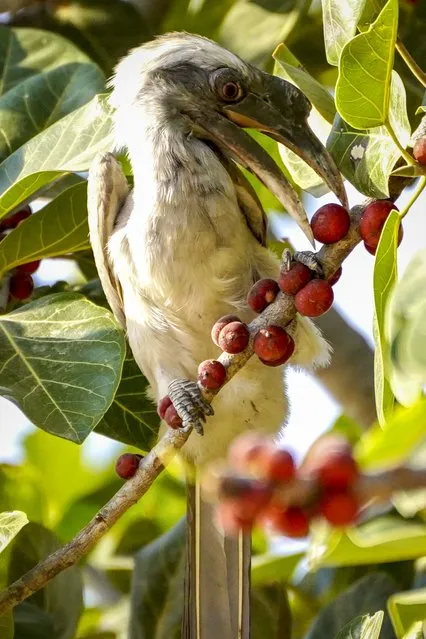
An Indian Grey Hornbill perches in a tree in Pushkar, India on October 15, 2022. (Photo by Stringer/Anadolu Agency via Getty Images)
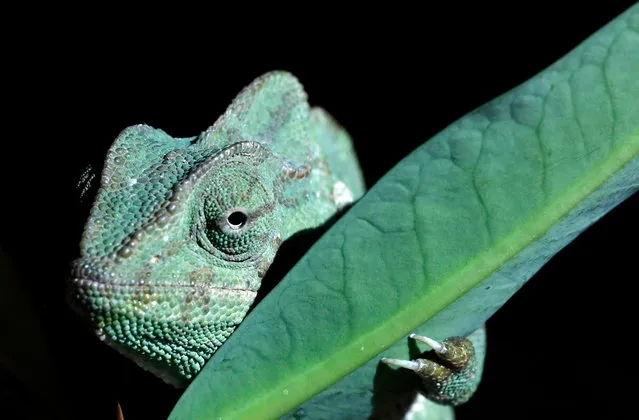
A Yemen chameleon walks on tree leaves at a house in Sana’a, Yemen, 17 October 2022. The veiled chameleon (Chamaeleo calyptratus) is native to the Arabian Peninsula in Yemen and Saudi Arabia and can live up to five years. The Yemen chameleon is naturally a light and bright green most of the time, simulating bright foliage. Chameleons are famous for their color-changing abilities. (Photo by Yahya Arhab/EPA/EFE)
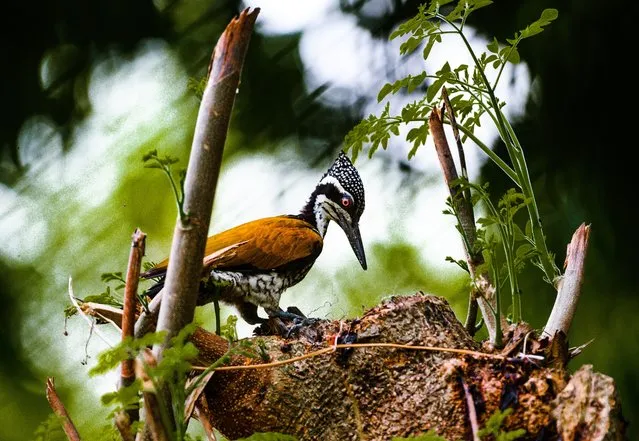
A female greater flameback woodpecker bird sits on a decaying moringa (Moringa oleifera) tree to eat insects at Tehatta, West Bengal, India on October 16, 2022. The greater flameback (Chrysocolaptes guttacristatus) also known as greater goldenback woodpecker or Malherbe's golden-backed woodpecker is a large-billed (33 cm) woodpecker species found in wet tropical and subtropical forests across South and Southeast Asia. (Photo by Soumyabrata Roy/NurPhoto via Getty Images)
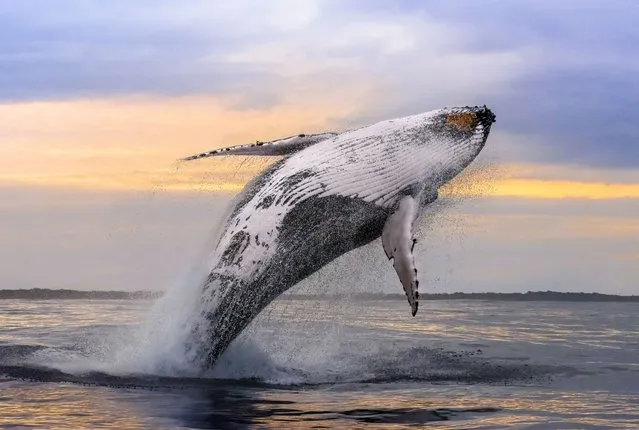
A 40-tonne humpback launching out of the water in an incredible breach in New South Wales, Australia on October 2022 in front of a sunset. The humpback whale can grow up to 56 feet long and typically covers 9,900 miles a year as it travels through the oceans of the world. Humpback whales are a species of Baleen whale, meaning they don't have teeth. Instead, they have baleen which helps them to filter feed. Their main source of food is krill or tiny bait fish. (Photo by Jodie Lowe/Media Drum Images)
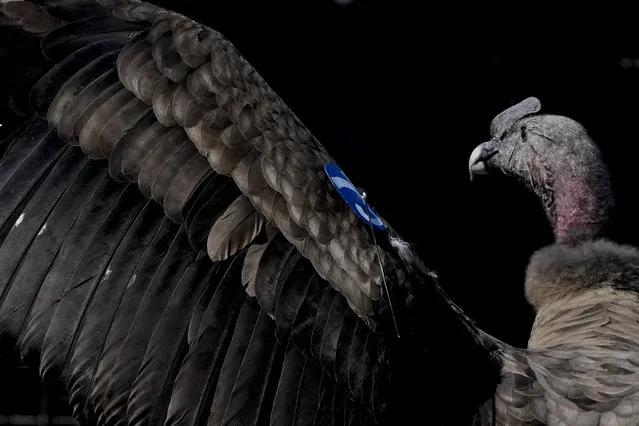
An Andean condor named Yastay, meaning “God that is protector of the birds”, in the Quechua Indigenous language, spreads his wings after being freed by the Andean Condor conservation program where he was born almost three years prior in Sierra Paileman in the Rio Negro province of Argentina, Friday, October 14, 2022. For 30 years the Andean Condor Conservation Program has hatched chicks in captivity, rehabilitated others and freed them across South America. (Photo by Natacha Pisarenko/AP Photo)

Pic shows the stunning moment a rutting stag got out of his depth and had to flee hostile waters as his victorious opponent bellowed in victory in the background in Bushy Park, London on October 14, 2022. (Photo by Dan Knight/ Magnus News)
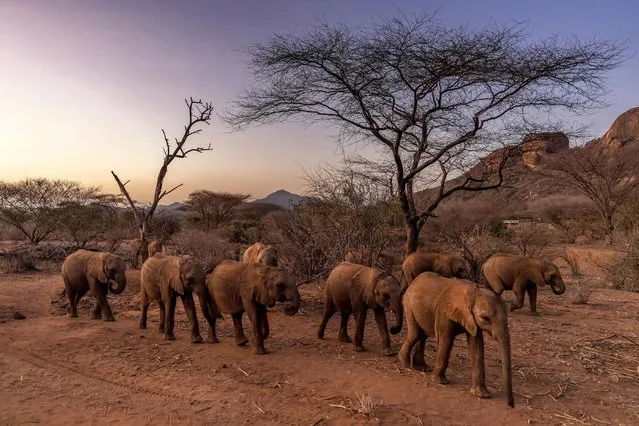
Elephant calves walk after a feeding routine early in the morning at Reteti Elephant Sanctuary in Namunyak Wildlife Conservancy, Samburu, Kenya on October 13, 2022. Reteti Elephant Sanctuary has been overwhelmed with rescue operations and the influx of orphaned and abandoned calves due to the current drought in Namunyak Wildlife Conservancy where they operate. Parched lands and dry wells cover the terrain leading to many baby elephants to lose their exhausted mothers, or get abandoned or lost. East Africa’s worst drought in forty years is starving Kenya’s famed wildlife of usual food and water sources while increasing human-wildlife conflict. (Photo by Luis Tato/AFP Photo)
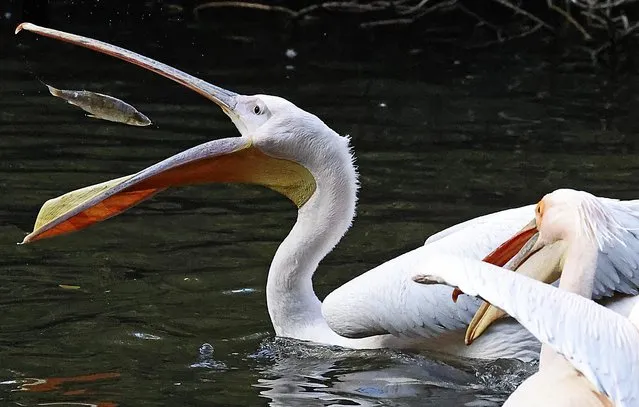
A wonderful bird is the pelican... and this one’s beak will certainly hold more than its belly can as the creatures jostle for food in St James’s Park, London on October 19, 2022. Pelicans were introduced to the park in 1664 as a gift from the Russian ambassador and more than 40 live there today. Feeding takes place daily at 2.30pm. (Photo by Nigel Howard Media)
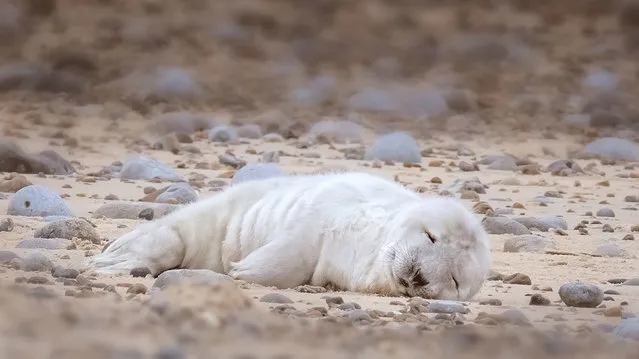
Undated handout photo issued by National Trust on Wednesday, October 19, 2022 of the first grey seal pup of the year which has been born at Blakeney Point in Norfolk, England's largest colony. Rangers are anticipating around 4,500 new arrivals at Blakeney Point on the North Norfolk coast this season. (Photo by Hanne Siebers/PA Wire Press Association)
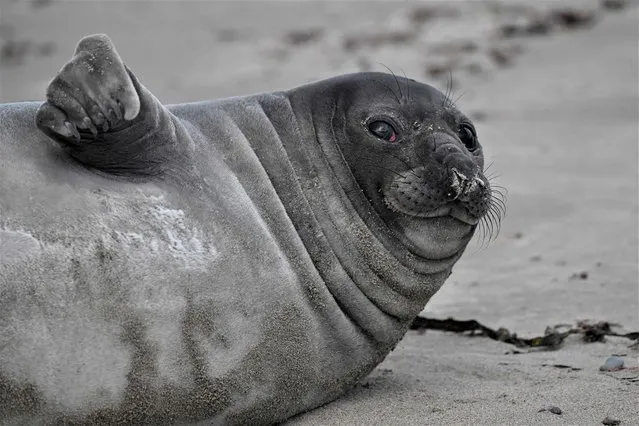
A baby Elephant seal is seen on the sand at Isla Escondida beach near Rawson, Chubut Province, Argentina, on October 8, 2022. (Photo by Luis Robayo/AFP Photo)
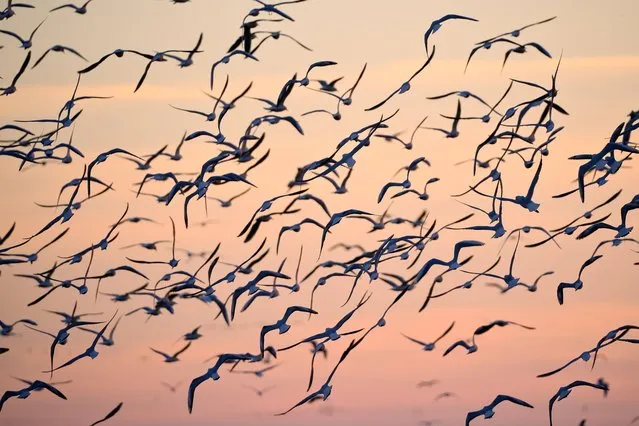
Gulls fly over a lake at sunset in the Hortobagy National Park near Hortobagy, Hungary, 20 October 2022. (Photo by Zsolt Czegledi/EPA/EFE/Rex Features/Shutterstock)
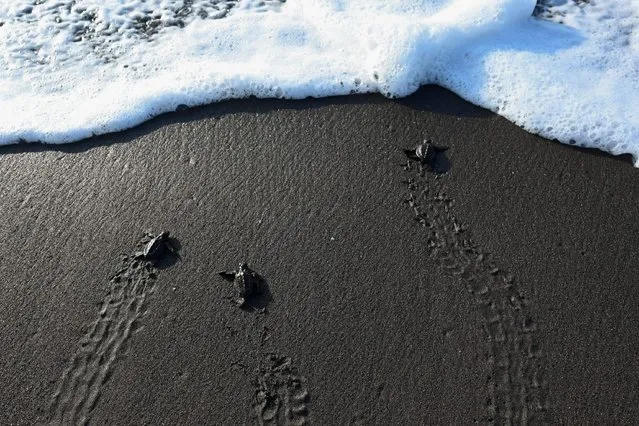
Black turtle hatchlings (Chelonia mydas agassizzi) head to the sea after being released on the beach of Sipacate, some 135 km south of Guatemala City, on October 19, 2022. (Photo by Johan Ordonez/AFP Photo)
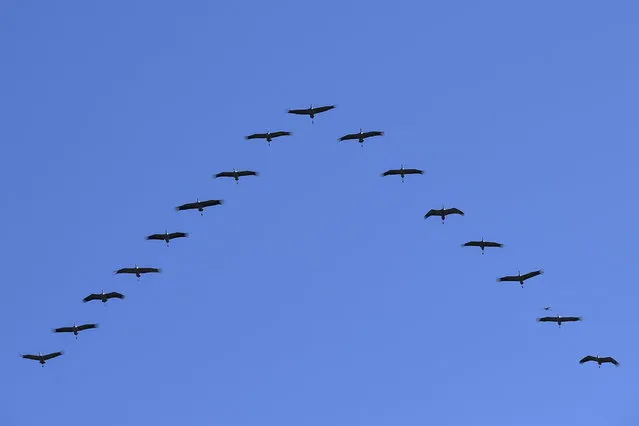
In this picture issued October 18., 2022, gray cranes (Grus grus) fly in V-shape above the Hortobagy steppe, northeastern Hungary, Monday, Oct. 2022. From early autumn, usually the second half of September, cranes begin to arrive from Northern Europe to the Hortobagy National Park, one of Europe's largest flocking places of this large migratory bird species. The cranes stay in the wetland areas until the onset of severe frosts, then continue their long journey to the southern wintering grounds. (Photo by Zsolt Czegledi/MTI via AP Photo)
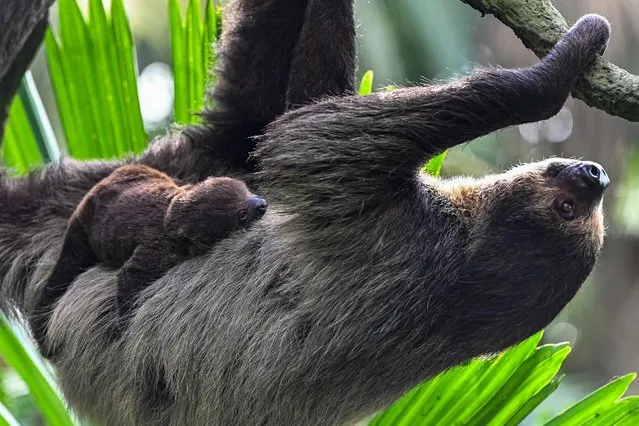
A female adult sloth named Indigo carries its two-month old pup on its belly at Singapore Zoo fragile forest biodome in Singapore on October 25, 2022. (Photo by Roslan Rahman/AFP Photo)
30 Oct 2022 04:28:00,
post received
0 comments
